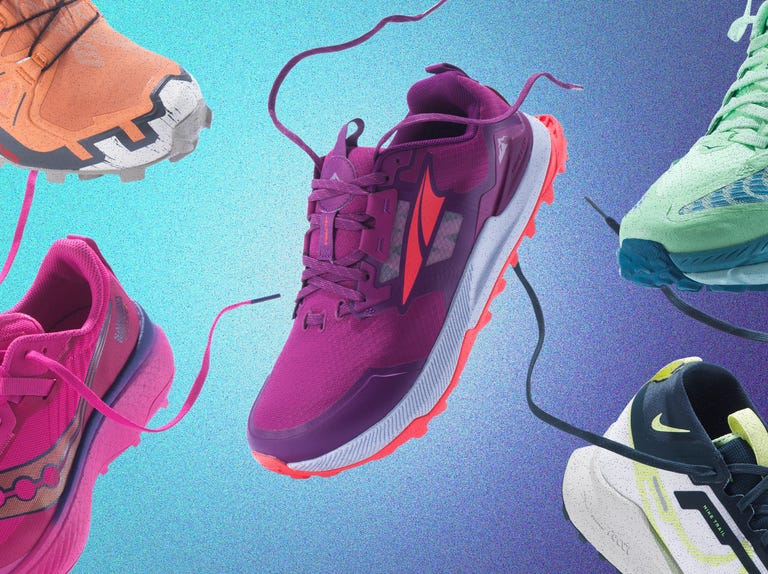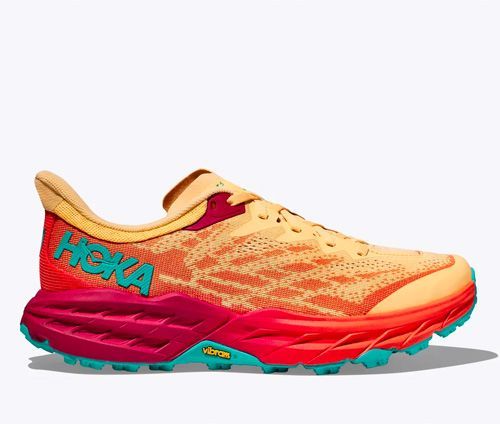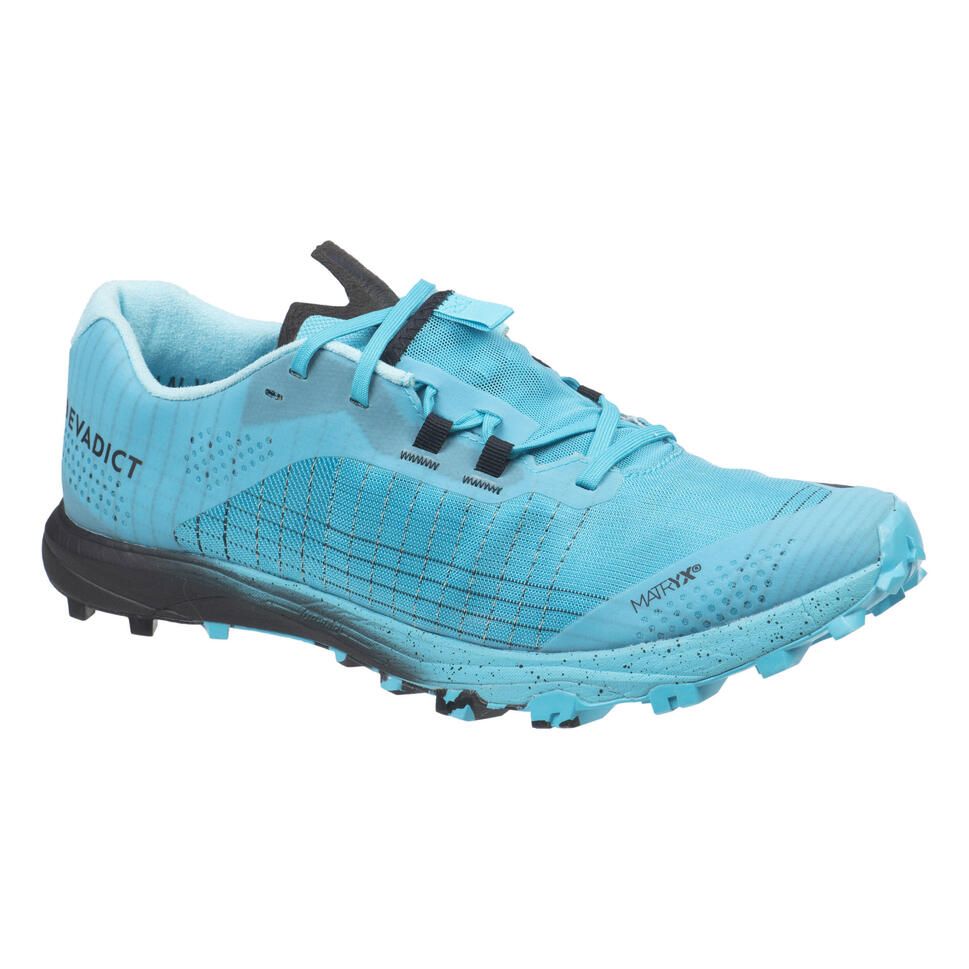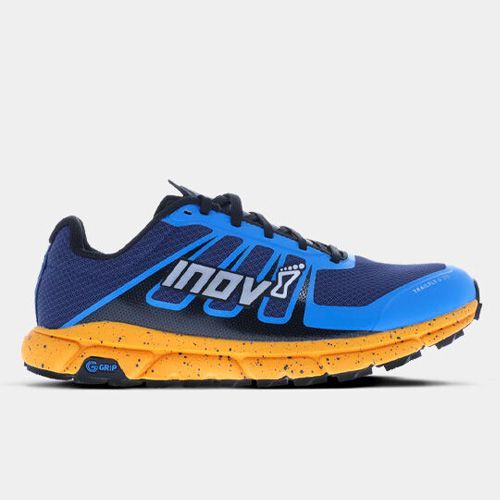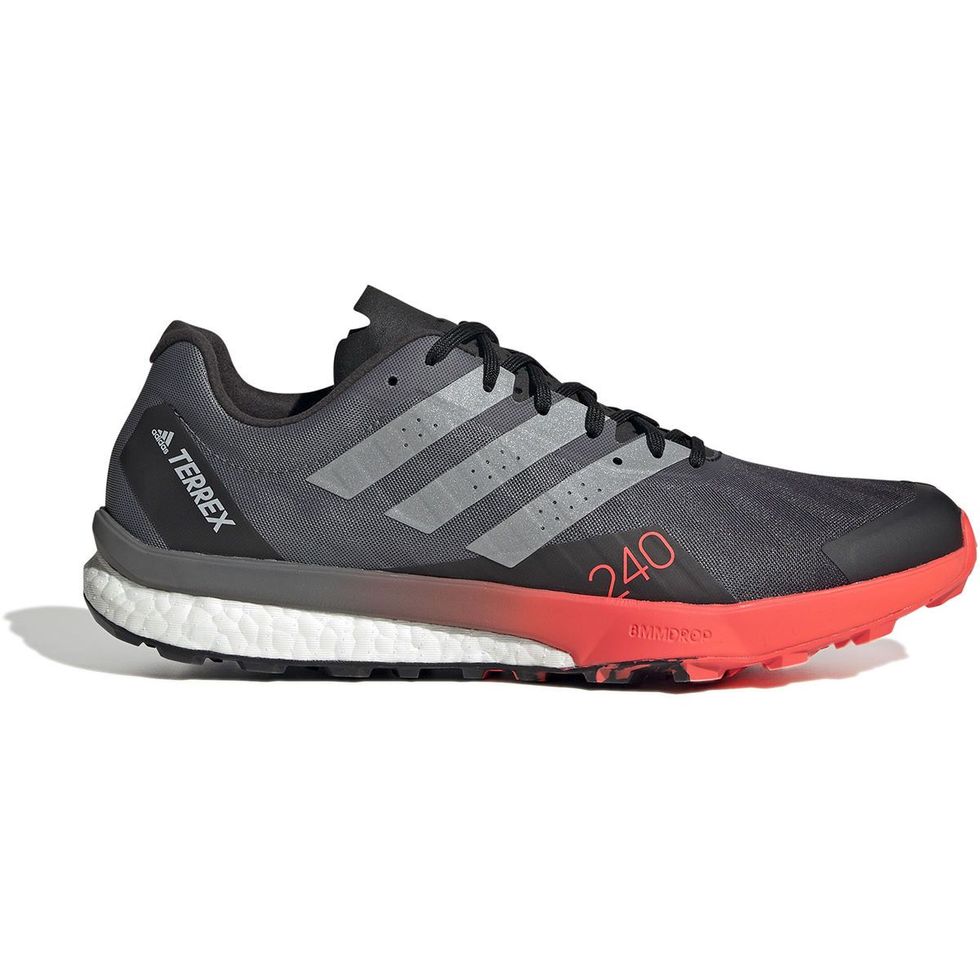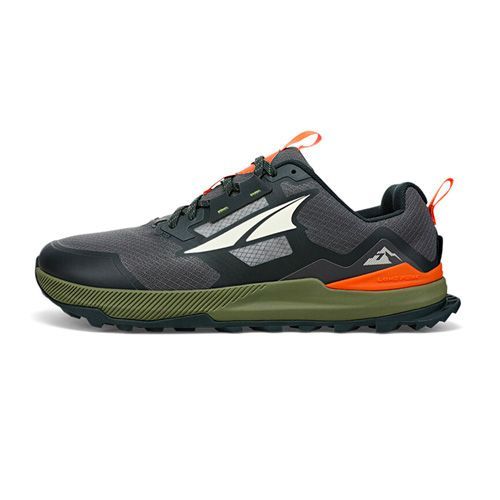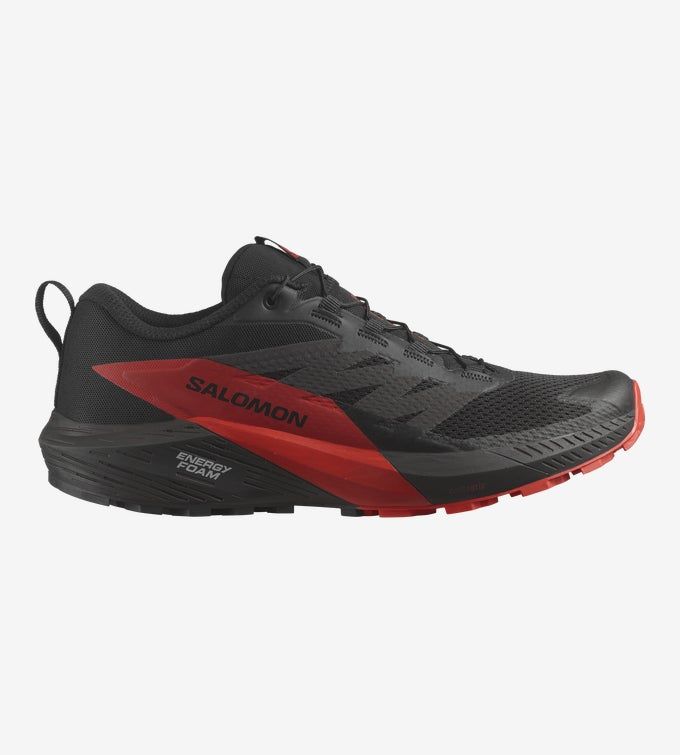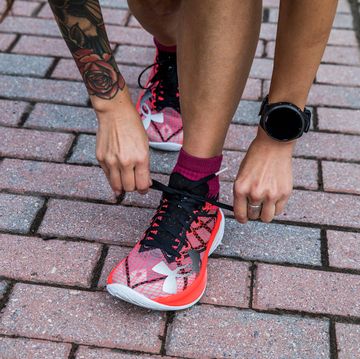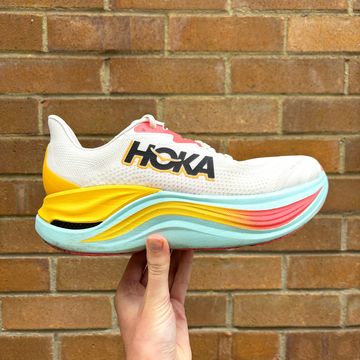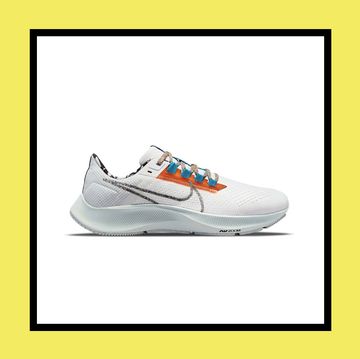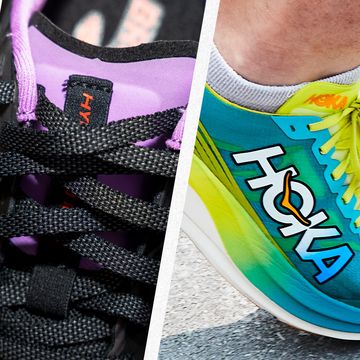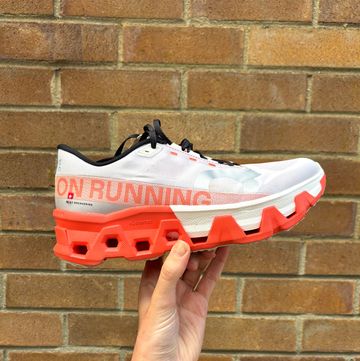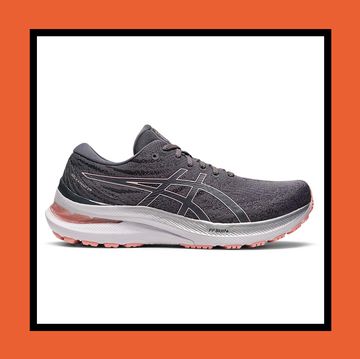Want more tried and tested recommendations from the RW editors? Sign up to our new weekly newsletter Kit Bag, coming soon. Click here to subscribe.
Fed up of pounding the pavements or fancy testing your technical abilities? The right pair of trail running shoes can give you the underfoot security to explore woodlands, hills, mountains, coastlines and more. Goodbye urban running, hello fresh air.
The mental and physical benefits of trail running are astounding too, with researchers finding getting off the beaten track lowers anxiety, reduces your risk of injury and forces you to use more muscle groups.
Many of the world's top distance runners – including those from Ethiopia and Kenya – run the majority of their miles off-road, often running only once a week on concrete. So even if you're training for a road marathon, there's plenty of advantages to getting off the pavement on a regular basis.
Editor’s Note: We reviewed our shoe selections on January 29, 2024 and have updated our recommendations. The below models now include the top-performing shoes from our most recent rounds of testing.
What are the best trail running shoes on the market in 2024?
We put a wide range of the latest models to the test and selected the best trail running shoes to suit every type of runner, from the occasional path dabbler to the hardened mountain tamer. Here's our top picks at a glance, or keep scrolling to read our full reviews.
What are trail running shoes?
Trail running shoes are designed to cope with tougher, more unstable terrain than road shoes. They're typically less cushioned, with stiffer midsoles than their road counterparts in order to offer more support and protect your feet from rocky surfaces. They also tend to be more durable and have sticky rubber outsoles or deep lugs for better grip.
How to choose a trail running shoe
So which trail shoe is best for you? First, consider the kind of trails you'll mostly be running on. Are these firm, well-groomed and mostly flat? If so, you might be okay running in your normal road running shoes – particularly during the summer months – or a trail shoe with a less aggressive tread. If, on the other hand, you're likely to be running in thick mud, or over rocks and more technically challenging terrain, you'll want a shoe with bigger lugs to help with the grip. Here are some things to look for:
- Low profile – the need for a thick layer of foam between your foot and the ground is negated when trail running. In fact, the lower the profile of the shoe, the more stable you’ll be on uneven ground. There's a balance, though: if you're running marathon or ultra-marathon distances off-road, the need for ample cushioning is crucial.
- Grip – without a good grip, you can’t run with confidence. But what constitutes good grip will depend on the kind of trails you're running on. For hard, rolling trails, you won't need too aggressive a grip. For mud and rocks, look for a shoe with longer lugs.
- In-built protection – off-road running can be hard on your shoes, especially the upper. Look for rubber or nylon reinforcements around the toe box, heel counter and the bottom of the upper. This can help to protect the shoes against rocks and other off-road debris.
- Waterproof protection – water will often be a problem on Britain’s trails, and when it comes to trail running trainers, there are two schools of thought: the waterproof shell, which works well when splashing through puddles, but does not allow water to escape from the shoe. The second approach is more of a sieve design, with focuses on the belief that keeping your feet watertight is impossible, and focuses on drainage rather than protection. Most shoes follow the latter design.
- Budget/longevity – Like their road running counterparts, trail shoes vary greatly in price. When choosing a pair, think hard about what you require from the shoe, how often you'll be wearing it and whether you require a top-of-the-range model or reliable workhorse. Also, focus on longevity: shoes that will stand up to miles and miles of off-road running without wearing down will, ultimately, be better value than a less durable pair – even if they cost slightly more.
Can you use trail running shoes on the road?
Like how some road shoes can cope on the trails, some trail shoes will cope on the roads. These tend to be trainers with more cushioning and shorter lugs, designed for hard, rolling trails. Bulkier, harder trail shoes will feel really uncomfortable on the road, in which case it's a much better idea to introduce a shoe rotation and invest in a separate pair for each terrain.
The best trail running shoes in 2024
Hoka Speedgoat 5
Named after US ultrarunner Karl ‘Speedgoat’ Meltzer, Hoka’s Speedgoats have garnered a devoted following as dependable, robust and comfortable performers. They feel snug and slipper-like, hugging the foot to keep it in place. A gusseted tongue aids the sock-like fit and the toe box delivers extra protection without feeling too solid.
On the run, Hoka’s trademark ride comes to the fore on approach roads and hard packed trails – pillowy soft, with enough bounce to keep your legs feeling lively. On more demanding terrain, they truly come alive. The lightweight foam midsole and grippy outsole combine to carry you over any terrain at speed, and testers said that their legs stayed energised after long miles. Some of that is down to Hoka’s late-stage Meta-Rocker easing you onwards, making the Speedgoats a good option for any trail distance, and superb over marathons and ultras.
Traction is improved via the reworked Vibram with MegaGrip outsole, built for technical trails with 5mm multi-directional lugs providing stability and sure-footedness.This traction combined with lightness meant that testers felt ‘goat-like’ on uphills, while descending was a ‘revelation’ with impact lessened on tired joints. All in all, they sprinkle a little magic on your trail experience.
Nike Pegasus Trail 4 GTX
Don’t let the GTX fool you into thinking this is some kind of extreme model for only the severest conditions and most technical terrain. It’s actually a true road/trail hybrid, with a React foam midsole that feels great on the pavement. And, though the GTX distinction suggests ankle-high waterproofness, the material only reaches to the top of the laces. The gaiter collar is instead a stretchy fabric, preferable for shielding against trail debris and light drizzle. Though not suited for deeper stream crossing, this construction does breathe easier. After splashing through shallow streams and rain-filled potholes, there’s a delightful absence of the soggy wet squish you sometimes get after fully sealing your feet inside GoreTex.
The GTX version has other differences aside from the waterproofness in the upper. The outsole uses a different, stickier rubber to the non-GTX version. It performs wonderfully well on all surfaces and, in further evidence of the Peg GTX’s road-to-trail multitool creds, especially so on the road. Compared to Nike’s Wildhorse 9 and Terra Kiger 9 – other trail models that also use TPE-based React foam – the Pegasus is the clear winner for door-to-trail runs. Responsive and smooth, the cushioning is reminiscent of the Pegasus 40 road model.
Off the road, it’s at its best on harder packed less technical trails, grass and dirt paths, providing a lively, responsive but smooth and nicely cushioned ride. The traction isn’t quite aggressive enough when things get really steep or slippy. Protective elements are also dialled down compared to the most extreme trail models, with no underfoot rock plate and limited added coverage at the toe, but unless you’re tackling something really extreme there’s enough to keep you safe and comfortable.
Decathlon Evadict Race Light
If you're after a nimble and grippy trail shoe for shorter efforts or races, then the Evadict Light is up there with some of the best. As you might expect from the name, this is a light, stripped-back shoe – and comes with a stripped-back price tag to match.
The upper is constructed from a light ‘Matryx’ mesh, hard-wearing but breathable, and while the tongue is certainly thin, the outsole is just thick enough to provide cushioning without impacting ground feel. In fact, considering how light the shoe feels, it offers an impressively robust degree of protection.
Sure, you'll get wet socks if it rains or is muddy, but you won't care, as you'll be speeding along with plenty of grip.
Decathlon bills this as the trail racer that was missing from its collection – but those without an eye on the podium will also find it a great shoe, whether it’s powering around offroad parkruns or tackling the fells.
Brooks Caldera 7
While the Cascadia from Brooks is their most popular trail shoe, these maximalist sasquatches are aimed at those who want to run all day. Put them on and you’ll find they’re not as Barbie high as they look from the outside. Your foot is cradled within that whopping sole, making for a ride that feels really stable. The width of the underside also increases surefootedness on the downhills, making every foot plant solid.
As a cruiser, it works a treat. Despite being bulkier than less stacked shoes, you’re running on Brooks’ nitrogen-infused DNA Loft v3 cushioning (also found in their Glycerin road shoe) so it still manages to feel light and exceptionally comfy. It's got a bit more flex in the forefoot and more underfoot feel than the v6, too, which gives it more versatility.
Secure lacing, a gusseted tongue and an upper that combines quick-drying mesh with tougher rubber around the sides, all add to a confidence that this is a shoe that will last on the big miles.
Saucony Peregrine 14
When diving, the Peregrine falcon is the fastest animal on the planet. But with their great grip, you’ll be pleased to hear its Saucony namesake will keep you firmly on your feet. The latest iteration is a great trail shoe: light without being minimalist and comfortable while still being responsive. Albeit not at falcon-diving pace.
The shoes features a decent amount of cushioning, particularly in the midfoot and forefoot, which helps create a plush ride – albeit one that still leans to the firmer side and can adroitly handle pace changes.
Saucony’s Powertrack outsole impressed our testers on both ascents and descents and on a wide variety of trail terrain. It’s well-designed 5mm lugs make it versatile enough to handle some short road sections, too.
Overall, this is a great offroad all-rounder, capable of performing well over a wide variety of distances and terrains – and only improved by the handful of technical updates and weight reduction in the new model.
Inov-8 Trailfly 270 V2
The first iteration of the Inov-8 Trailfly 270 won multiple awards, including Runner’s World’s ‘Trail Running Shoe of the Year 2020’. So the bar was set high for its follow-up – and Inov-8 has cleared that bar and nailed the landing.
The Trailfly is an impressively versatile shoe with enough cushioning for long runs but with a zero-drop, fast-feeling appeal. With an outsole made from graphene – Inov-8’s tougher-than-tough material – it’s built to last even some serious ultra mileage on the most challenging terrain.
“Straight out of the box, it’s a joy to run in” said one tester. At 270g, it hits a sweet spot between cushioning and speed, making it a shoe you can use for all your trail-running purposes, whether training or racing. There’s a premium feeling to the details, too: the lacing system is secure, the tongue padded, testers reported zero hotspots and the grip is excellent on every surface the trails could throw at it.
Built to last, the Trailfly will serve you well over many hundreds of miles – just be aware that it’s a zero-drop shoe, which isn’t for everyone. But for those who like to do like that contact-with-ground feel, this shoe should (Trail)fly up your wish-list.
Saucony Endorphin Edge
While shoes with carbon plates have colonised the world of road racing, they’re not nearly so ubiquitous on the trail – or not yet, anyway. The Saucony Endorphin Edge is a notable trailblazer, aiming to bring some of the carbon-fibre creds of the brand’s Endorphin range to the offroad arena.
Does it work? Our testers say yes. Inside the Pwrrun PB midsole foam, that plate is stiff in one direction (propelling you snappily forward) but remains flexible in the other (so you stay nimble on your feet).
This means that, unlike some supershoes, it offers stability as well as comfort. Indeed, it’s a nice, roomy fit and with a well-designed upper for a locked-down feel on all terrains. This is also no lightweight fragile racer, but a properly robust shoe, weighing in at 255g in a men’s and 221g in a women’s. All this adds up to a comfortable but propulsive ride, particularly on dry, level trails.
Hoka Mafate Speed 4
The Speedgoat might be a more familiar Hoka trail mainstay, but our testers were blown away – or, perhaps more appropriately, stayed firmly on the most treacherous of paths – with the Mafate Speed 4. The update offers superlative traction on steep, slippery and technical terrain, while the midsole gives a cushioned yet still responsive ride. That the ride is relatively firm just helps provide a good platform when or if you want to pick up the pace.
That midsole is actually a dual-density construction. A lightweight bouncy foam closest to your foot gives considerable comfort and a lovely bounce on hard-packed ground. Meanwhile the bottom layer is more robust – durable and firmer, it helps keep your feet protected over uneven ground or treacherous rocks.
The Litebase outsole, meanwhile, has a seriously aggressive series of lugs for great grip, while – as the name suggests – still being nice and light. With testers particularly impressed by its performance on tricky uphills, you’ll definitely be doing your best mountain goat impression in these impressive Hokas.
Salomon Speedcross 6
It may only be version six of the Salomon Speedcross, but this shoe is close to being heralded as a ‘classic’ trail running shoe, its many dedicated fans a testament to that.
The main reason why the shoe is such a success is that it is clearly up to task when faced with challenging terrain and this latest model offered up the tried and tested grip made famous by previous models, feeling reassuring in mud and giving a very clear sense of ground feel and control, especially through the forefoot and toes. This comes in part from the relatively unchanged lug pattern, the 10mm stack drop from heel to toe, giving the shoe an aggressive feeling stance and the fact that the stack height under the forefoot is only 22mm, which places the foot as close to the ground as possible without entering into realms of minimalist shoes (for comparison, the Nike Streakfly, a stripped down road race shoe, has a 26mm forefoot stack).
However, all the reasons that make this shoe a success for some, will not suit others. In a time when stack heights are increasing, lugs are getting smaller and foam is more compressive and responsive, the Speedcross can seem antiquated with its firm feeling midsole and low stack heights, but if you’re after a trail shoe that offers up a real sense of confidence wherever you run, then maybe this ‘classic’ trail shoe could be for you.
Adidas Terrex Speed Ultra
Looking for an all-rounder that sits (or runs) on the middle ground between a racer and a super-cushioned plush ride? Look no further, because the good looks of the Terrex Speed Ultra) are backed up by impressive performance.
The Speed Ultra’s midsole is composed of a Boost TPU compound and Lightstrike EVA cushioning, and the result is responsive comfort. Our testers said they felt they could log long miles in these, but also wear them on race day.
Adidas shoes usually get good marks for grip, and the Speed Ultra is no exception, feeling stable and secure across multiple terrains, with the possible exception of thick mud. Offroad shoes don’t tend to score too highly in the fashion stakes so the looks are worth a mention – one tester noted that this is ‘a great-looking shoe that you’d feel comfortable wearing even in non-running scenarios’ – and that’s not something you’ll hear often of trail shoes.
Note, though, that though the fit is excellent, roomy but locked-in, most people find they need a half size larger. While it’s clearly designed for trails, the Speed Ultra also performs really well on the road. Snappiness, comfort and those good looks? We’re sold.
The North Face Vectiv Sky
As part of The North Face’s premium Vectiv range, the Sky sits alongside the Vectiv Pro – offering a lower stack alternative to the more robust, long-distance Pro.
With a full-length carbon plate that is forked in the heel and forefoot to allow for lateral movement, this is a trail shoe that focusses on speed and efficiency while still offering plenty of protection and, crucially, stability.
The sock-fit design makes it a dream to pull on, and there is plenty of room around the toebox for free movement. The upper is beautifully breathable, made of a mesh-like material that is nevertheless robust. There’s a moulded heel counter for additional support, and the padded collar and tongue feel nicely plush.
The rocker geometry plus that plate give a lovely toe-off on the run, helped by a responsive midsole including a 4mm Pebax insert. The robust outsole has 3.5mm lugs for grip on softer ground, though this is definitely a shoe that performs best on dry trails, where that supershoe feel really comes into its own.
Altra Lone Peak 7
Runners who like a lot of room in their trail shoes, wiggle those toes in bliss right now. The Altra Lone Peak 7 offers a toebox roomy enough for even the most spreadeagled of tootsies.
It’s a tough trick to pull off but the Lone Peak manages it – offering space to allow for natural foot movement and toe play, without so much space that your feet feel sloppily locked in and insecure. The new stitchless upper helps give that locked in feel, wrapping the foot closely without ever wrinkling or bunching.
Altra’s Ego midsole foam is a cocktail of EVA and TPU, and testers commented that it is surprisingly soft, particularly for a trail shoe. While that makes it perhaps less suited for race efforts, it does provide a lovely plush and responsive ride. The stabilising heel clip offers a bit of extra support on tight turns and paths.
The MaxTrac outsole, meanwhile, is superb, with 5mm lugs on the lateral heel and medial toe to give you better grip on tough terrain. The midsole rock plate also offers protection on rocky trails. For runners who like a zero-drop shoe that keeps them close to nature – but protects them from its excesses – this is a great choice over any distance.
Arc’Teryx Norvan LD 3
Arc’Teryx is known for its highly technical and consequently high-priced mountainwear. Over the past few years, however, the company has branched out into trail-running kit, including shoes. The LD 3 is its latest model, designed for running from road to trail. The 4mm lugs on the Vibram MegaGrip outsole provide medium levels of grip on gravelly surfaces, while being comfortable enough to run shorter sections on the road. The lugs cut through mud dependably and our testers found they provided stellar and dependable traction for dusty ascents.
As well as being ideal for hybrid trails, the LD 3 is also built for running longer distances due to the lighter weight and well-cushioned midsole. You particularly notice the soft ride as you bounce nimbly over exposed roots and jagged rocks. Our testers also noted that the gusseted tongue is a handy addition as it not only makes getting the shoe on and off easier, but it also enhances the fit while ensuring the tongue doesn’t slip while you run. A versatile, high-spec and highly impressive performer – all without the eye-watering price tag you might expect.
On Cloudvista
The most lightweight of On's off-road range, the Cloudvista is designed for short- to mid-distance trail runs. With a versatile outsole that can cope with a variety of off-road terrain – from mud to hard-packed trails as well as road sections – it's an attractive option for those looking to run from door to trail. Our testers wore the shoe on short, fast runs and long, slow outings, finding the shoe could cope well on both.
'The shoe feels secure, the foot is supported well by thin laces over the midfoot and there were zero hotspots,' said one tester. However, it should be flagged that the shoe comes up small –On themselves recommend you take the shoe a half size up, which worked for our testers. Overall, our testers were impressed with the Cloudvista, with one calling it 'a sturdy, lightweight shoe with good grip enabling you to be nimble and fast on a wide variety of ground conditions'.
Salomon Sense Ride 5
The Salomon Sense Ride 5 is a jack-of-all-trades trail shoe, designed to be comfortable across a wide variety of paces, distances and terrain. Appropriately then, it occupies the middle ground in terms of weight (286g), lug length (3.5mm), heel-to-toe drop (8mm) and stack height (27mm in the heel, 19mm in the forefoot). As such, the Salomon Sense Ride 5 has a broad appeal: a great choice for newbies dipping their toe into trail running, but also a solid bet for experienced off-roaders looking for a do-it-all shoe at a reasonable price.
RW enjoyed running in the shoe over a variety of distances and speeds, and regards it as a particularly good option for off-road newbies likely to be running on less extreme trails. Compromises have been made here, and edge-seekers with deep pockets will find more exciting options elsewhere. But if you’re looking for an overachieving shoe from a high-quality brand, the Salomon Sense Ride 5 delivers.
Like this article? Sign up to our newsletter to get more articles like this delivered straight to your inbox.

Ben is the Multiplatform Director and has worked at Runner's World for over 10 years. In this time he has replaced core childhood memories with miscellaneous stats about running shoes and tech. Ben is a firm believer that running is just as much about adventure and fun as about chasing PBs, and he likes nothing more than a day spent explore new trails.
Ali is Runner’s World's e-commerce editor, specialising in testing and reviewing the latest running shoes, gear and tech. She has tested hundreds of products from the biggest running brands, including Nike, New Balance, On, Adidas and more. Ali speaks to some of the world’s top experts across footwear, running apparel, fitness equipment and nutrition to help runners make smart decisions when shopping online, from glucose monitors to help you nail your fuelling strategy to compression boots to aid your recovery. Ali has worked in health and fitness journalism since 2017. Before joining Runner’s World, she was health editor at Future Plc, working across brands including Coach, Fit&Well, T3, TechRadar and Live Science. A Boston qualifier, she’s completed nine marathons (including one set on a wild African savannah) and is on a mission to tick off every World Marathon Major. Her proudest achievement to date? Running a five-day 220km ultramarathon across Tanzania. Just don’t ask her to race a 10km…
